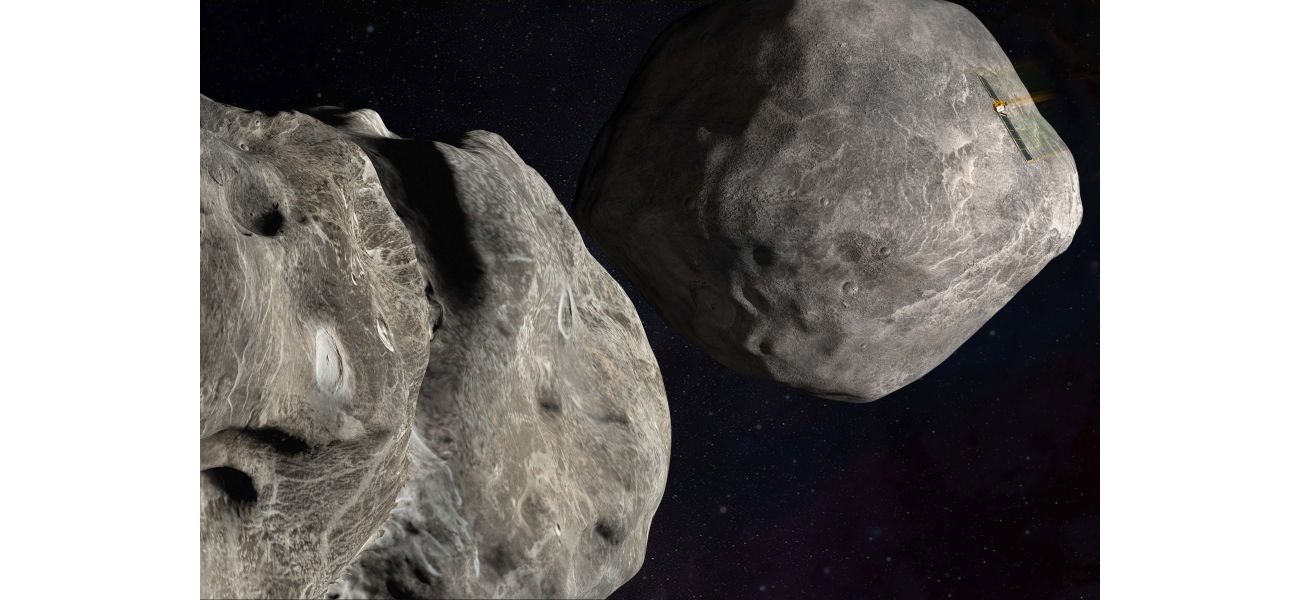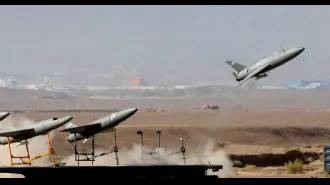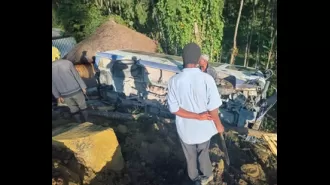A collision between spacecraft could have caused a long-lasting meteor shower.
NASA's DART spacecraft will create the first human-made meteor shower, called the Dimorphids, by colliding with the asteroid Dimorphos in 2022.
September 1st 2024.

In 2022, NASA's DART spacecraft made a groundbreaking move by intentionally crashing into the tiny asteroid Dimorphos. This was part of a larger mission, the Double Asteroid Redirection Test, aimed at testing asteroid deflection technology for planetary defense. The goal was to see if a kinetic impact, such as a high-speed collision, could alter the trajectory of an asteroid in space.
While neither Dimorphos nor its larger parent asteroid Didymos posed any threat to Earth, they were the perfect targets for this experiment due to their size being comparable to potentially dangerous asteroids. For almost two years, astronomers have been closely monitoring the aftermath of the impact using ground-based telescopes. They have determined that the DART spacecraft successfully changed the motion of Dimorphos, altering its orbital period by about 32 to 33 minutes.
However, the impact also resulted in the creation of millions of kilograms of rocky debris, equivalent to about six or seven rail cars. The exact location of this material in space has been a mystery until now. A recent study suggests that some fragments of Dimorphos will reach the vicinity of Earth and Mars within the next few decades, with the possibility of some debris reaching Mars in just seven years and smaller debris potentially entering Earth's atmosphere within the next decade. This study has been accepted for publication in the Planetary Science Journal.
Lead study author Eloy Peña Asensio explains that this material could produce a visible meteor shower as it enters the Martian atmosphere. He adds that the first particles could arrive at Mars or Earth intermittently for the next 100 years. However, he reassures that the individual pieces are small and pose no risk to Earth as they will disintegrate upon entering the atmosphere.
Predicting the trajectory of this debris has been a challenging task for researchers. The DART spacecraft was not alone when it crashed into Dimorphos - a small satellite named LICIACube was also present to capture footage of the impact and resulting debris cloud. This data has been crucial in analyzing the debris and its motion. The research team used this data and advanced computer simulations to predict the possible pathways and velocities of the debris across the solar system.
The study confirms that some of the fastest-moving particles could reach Earth in less than 10 years, while others could potentially reach Mars. The team also suggests that the debris could reach nearby asteroids, and future observations will help refine mass measurements and determine the expected meteor activity.
The Hera mission, expected to launch in October, will provide further insights into the aftermath of the DART impact and the transformation of Dimorphos. This will help astronomers understand the dynamics of debris created by such a complex impact in a double-asteroid system. Overall, this groundbreaking experiment has provided valuable information for future missions and advancements in asteroid deflection technology.
While neither Dimorphos nor its larger parent asteroid Didymos posed any threat to Earth, they were the perfect targets for this experiment due to their size being comparable to potentially dangerous asteroids. For almost two years, astronomers have been closely monitoring the aftermath of the impact using ground-based telescopes. They have determined that the DART spacecraft successfully changed the motion of Dimorphos, altering its orbital period by about 32 to 33 minutes.
However, the impact also resulted in the creation of millions of kilograms of rocky debris, equivalent to about six or seven rail cars. The exact location of this material in space has been a mystery until now. A recent study suggests that some fragments of Dimorphos will reach the vicinity of Earth and Mars within the next few decades, with the possibility of some debris reaching Mars in just seven years and smaller debris potentially entering Earth's atmosphere within the next decade. This study has been accepted for publication in the Planetary Science Journal.
Lead study author Eloy Peña Asensio explains that this material could produce a visible meteor shower as it enters the Martian atmosphere. He adds that the first particles could arrive at Mars or Earth intermittently for the next 100 years. However, he reassures that the individual pieces are small and pose no risk to Earth as they will disintegrate upon entering the atmosphere.
Predicting the trajectory of this debris has been a challenging task for researchers. The DART spacecraft was not alone when it crashed into Dimorphos - a small satellite named LICIACube was also present to capture footage of the impact and resulting debris cloud. This data has been crucial in analyzing the debris and its motion. The research team used this data and advanced computer simulations to predict the possible pathways and velocities of the debris across the solar system.
The study confirms that some of the fastest-moving particles could reach Earth in less than 10 years, while others could potentially reach Mars. The team also suggests that the debris could reach nearby asteroids, and future observations will help refine mass measurements and determine the expected meteor activity.
The Hera mission, expected to launch in October, will provide further insights into the aftermath of the DART impact and the transformation of Dimorphos. This will help astronomers understand the dynamics of debris created by such a complex impact in a double-asteroid system. Overall, this groundbreaking experiment has provided valuable information for future missions and advancements in asteroid deflection technology.
[This article has been trending online recently and has been generated with AI. Your feed is customized.]
[Generative AI is experimental.]
0
0
Submit Comment





